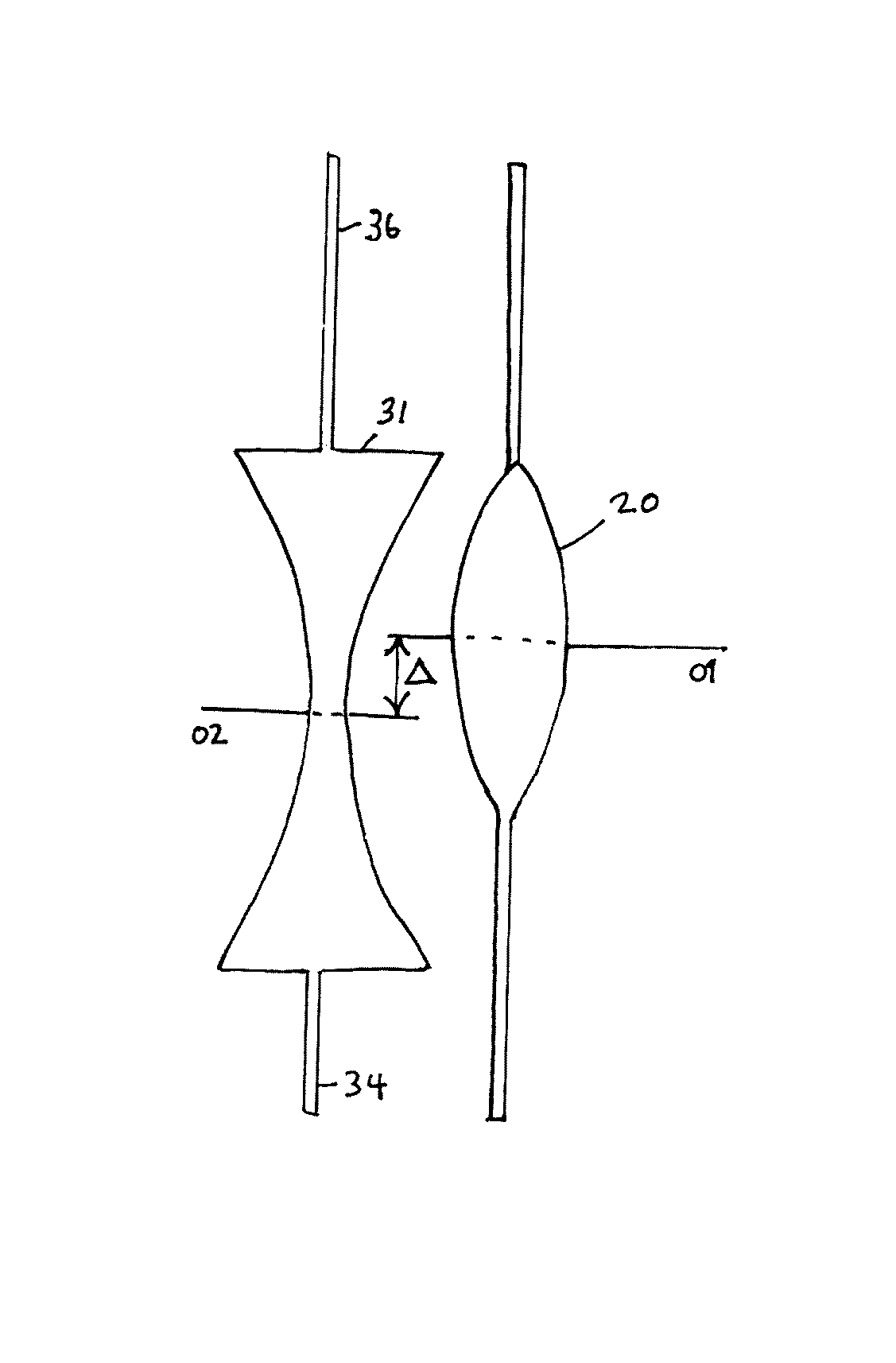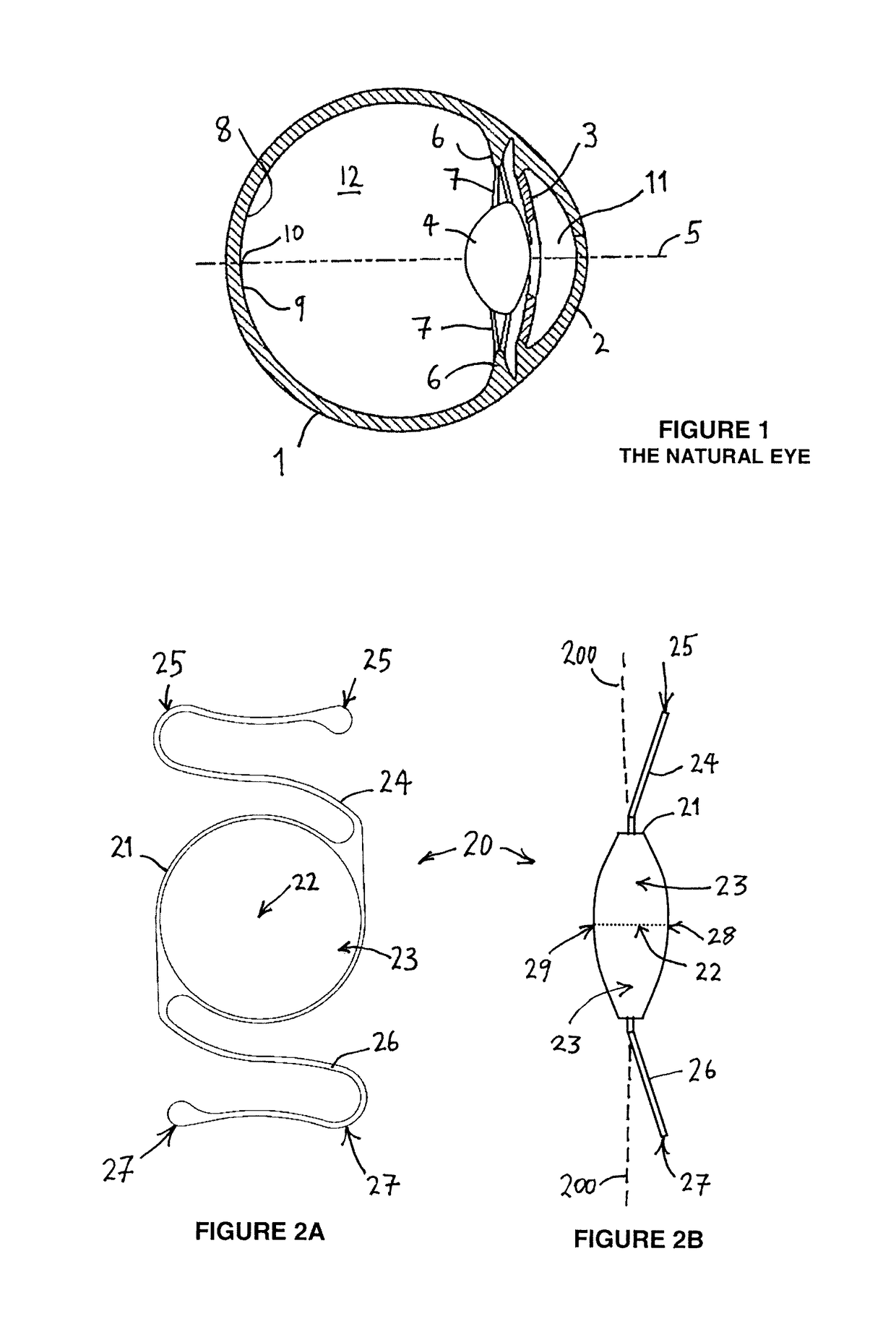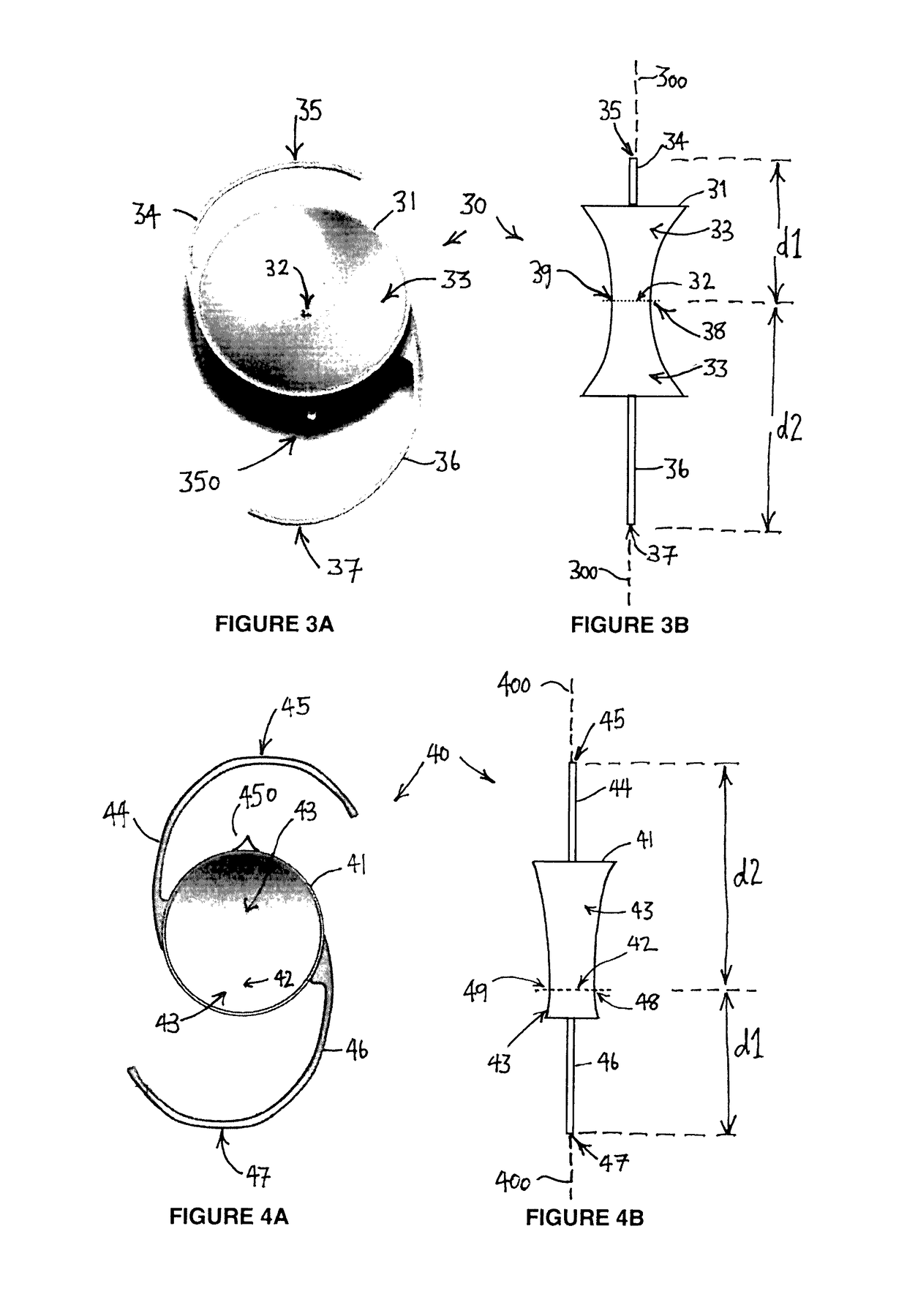Intraocular lens systems and methods
a technology of intraocular lenses and lenses, applied in the field of intraocular lenses, can solve the problems of blurred spot or dark spot forming at the centre of vision, reducing the ability of the retina to detect,
- Summary
- Abstract
- Description
- Claims
- Application Information
AI Technical Summary
Benefits of technology
Problems solved by technology
Method used
Image
Examples
Embodiment Construction
[0046]FIGS. 2A and 2B illustrate views of an anterior intraocular lens unit (20) including a converging lens (21) shaped to define as between opposite operative anterior lens surfaces a lens part of maximal thickness (22) surrounded by lens parts of lesser lens thickness (23). The lens part of maximal thickness defines a central axis perpendicular to, and passing through, opposing and instantaneously parallel operative anterior lens surfaces (28, 29). This axis coincides with the optical axis of the converging lens which also contains the focal points of the lens.
[0047]The anterior lens unit has a first serpentine anterior haptic limb (24) extending away from the converging lens to a first anterior haptic part (25) at a first anterior maximal distance from the lens part of maximal lens thickness. A second serpentine anterior haptic limb (26) separate from the first anterior haptic limb, extends from a part of the converging lens diametrically opposed to that part from which the firs...
PUM
 Login to View More
Login to View More Abstract
Description
Claims
Application Information
 Login to View More
Login to View More - R&D Engineer
- R&D Manager
- IP Professional
- Industry Leading Data Capabilities
- Powerful AI technology
- Patent DNA Extraction
Browse by: Latest US Patents, China's latest patents, Technical Efficacy Thesaurus, Application Domain, Technology Topic, Popular Technical Reports.
© 2024 PatSnap. All rights reserved.Legal|Privacy policy|Modern Slavery Act Transparency Statement|Sitemap|About US| Contact US: help@patsnap.com










